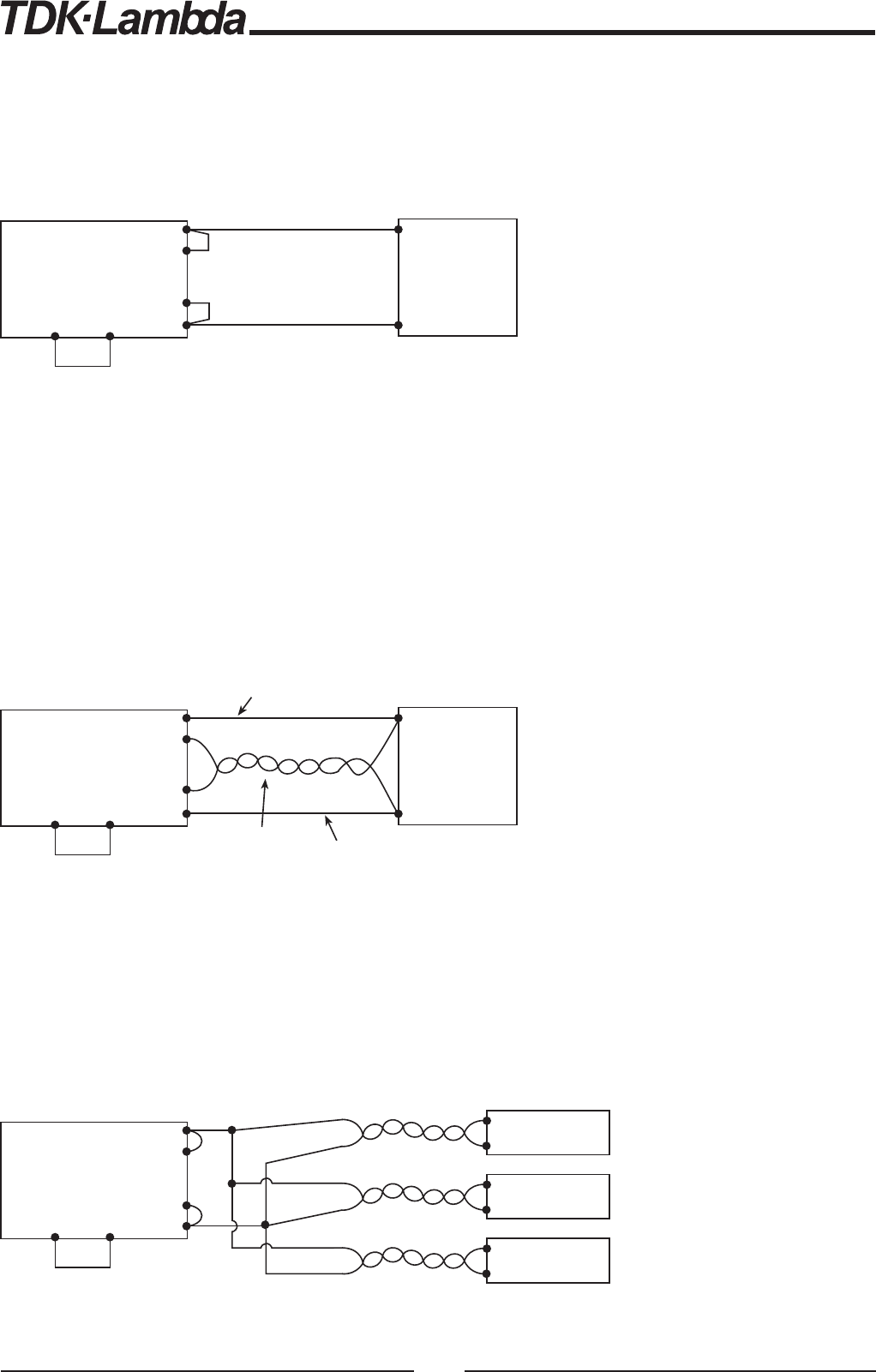
14
Fig 5-1: single load connection, local sensing
Fig 5-2: Remote sensing, single load.
CHAPTER 5 BASIC CONNECTIONS FOR OPERATION
5.1 Connecting single load, Local sensing
Local sensing is suitable for applications where load regulation is not critical. Fig 5-1 shows recommended
load and sensing connections for applications with a single load.
5.2 Connecting Single Load, Remote Sensing
Remote sensing is used in cases where the load regulation is important at the load terminals. Use twisted
or shielded wires to minimize noise pick-up. If shielded wires are used, the shield should be connected
to the ground at one point, either the power supply side or the load. The optimal point for the shield ground
should be determined by experimentation. Refer to the power supply specifications for the maximum
voltage drop allowed at the load wires.
Fig 5-3: Multiple loads connection , radial distribution
5.3 Connecting Multiple loads, radial distribution method
In cases of multiple loads connected to one supply, each load should be connected to the power supply's
output terminals using separate pairs of wires. It is recommended that each pair of wires will be as short
as possible and twisted or shielded to minimize noise pick-up and radiation.
The sense wires should be connected to the power supply output terminals or to the load with the most
critical load regulation requirement.
LOAD
FPS1000
SIGNAL
RTN
ON/
OFF
+V
+S
-S
-V
8
13
710
1,2,4
3,5,6
FPS1000
SIGNAL
RTN
ON/
OFF
+V
+S
-S
-V
8
13
710
1,2,4
3,5,6
LOAD # 1
+
-
LOAD # 2
+
-
LOAD # 3
+
-
+
-
LOAD
FPS1000
SIGNAL
RTN
ON/
OFF
+V
+S
-S
-V
8
13
710
Sense lines
Twisted pairs
Load line.
Up to 1V drop.
Load line.
Up to 1V drop.
1,2,4
3,5,6
+
-
In Local sense applications, the +/- sense have to be connected to the
+/-V terminals of the FPS1000 units prior the operating the FPS1000 units
*


















